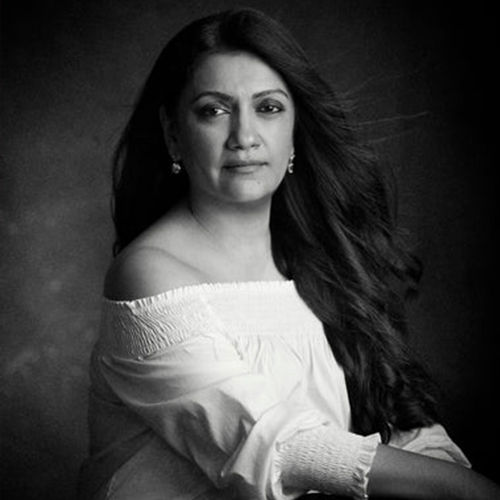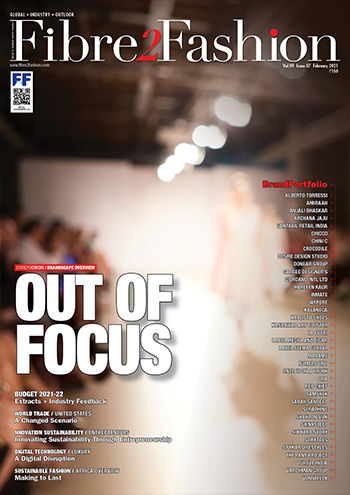
Seema Gujral
Founder
Label Seema Gujral
Glamorous, yet wearable
Seema Gujral's designs for her eponymous label revolve around creating ensembles that reflect the beauty of India's traditional crafts with a contemporary touch. Made with excellent quality fabrics, each garment is customised according to the taste and requirements of the bride-to-be. In a chat with Fibre2fashion, the designer discusses the kind of growth her brand has seen in the last 3 years, the USP of her ensembles and future plans from the sustainability angle.
Fibre2Fashion: When and where was the company established? Who are the founders?
Seema Gujral:
Myself with a team of three, opened my production house Iris, in 1994 in Noida, Uttar Pradesh. My designs reflect my unique vision. Each ensemble is carefully handcrafted, where the focus lies in intricate details and upholding the consistency of the art. It is a harmonious blend of classic heritage and new-age glamour.
F2F: Which are the categories the brand is into?
SG:
Womenswear
F2F: What is the USP of your products?
SG:
My products are glamorous, yet wearable.
F2F: Who are your target audience?
SG:
Adult women who can be based anywhere in the world.
F2F: What is your market positioning like?
SG:
We are in the premium segment.
F2F: What kind of brand building strategies do you implement?
SG:
We have launched an official website for the brand. Our marketing strategy has changed in the last 2 years and we are pushing the brand with A list celebrities and magazines. We have launched our last 3 campaigns with the top models and the best photographers in the business and revamped our social media which has given us great results.
F2F: Which category sells the most and what is the price point?
SG:
The lehenga category sells the most. Its price point is under 1 lakh.
F2F: What is your retail and web presence like?
SG:
We have our own studio in Noida, and we are also present in 15 multi-brand outlets (MBOs). Online, we have our presence in Aza, Ogaan, Ensemble, Pernia’s Pop-Up Shop.
F2F: Which are your major markets in India and abroad?
SG:
India, US, UK, Dubai
F2F: Which other product categories do you plan to move into future?
SG:
We plan to move into menswear.
F2F: What has been your growth story in the last three years (excluding 2020)?
SG:
We launched the label three years ago and it has been a steady, happy growth.
F2F: What has been the impact of Covid in terms of sales, staff cutdown, rentals, stocks etc?
SG:
My personal clientele has increased significantly. We restarted gradually with fewer people but are currently running full throttle. In terms of stock -- there was a sudden pause, and we did have a lot of production in process but were able to liquidate the same at MBOs.
F2F: If you are looking for vendors, what are the top 3 qualities you look for beyond the givens of quality, lead time, compliances etc?
SG:
The vendors must have time commitment, pride in their own art, and a high effort level.
F2F: How does your supply chain network work? What regions of the world is part of your supply chain?
SG:
We mostly deal in Indian fabrics and source according to current trends from Varanasi, Bangalore, Jaipur, etc.
F2F: What is the annual production capacity?
SG:
5000 - 8000 ensembles.
F2F: How is the supply chain expected to change with increasing digitisation, AI, VR etc? And how is this going to impact the business of sourcing?
SG:
We find that our vendors have updated themselves with technology and are using imagery, video calls, etc to sell their product to us.
F2F: What kind of machinery does your manufacturing facility boast of? How much is spent on machine upgradation and maintenance annually?
SG:
We use modern, top-of-the-line sewing and finishing equipment. There is no definite budget, but we have an in-house maintenance team who update machinery as and when required.
F2F: Sustainability and circularity are the buzz words today. How do you incorporate them into your product lines?
SG:
Our current range is based on pure silk fabrics. We are gradually transitioning into using man-made fabrics made using sustainable fibres like eco-vera, bamboo cottons, and recycled polyesters. However, we do have a sister concern, that exports to the US and European markets for various fashion brands using end-to-end certified sustainable fabrics. We have also recently launched a domestic westernwear brand where conventional fabrics as well as sustainable fabrics are being used. (PC)
This interview was first published in the Feb 2021 edition of the print magazine
Gabi Seligsohn
Arun Sirdeshmukh
Rahul Mehta
Aseem Prakash
Rahul Mehta
Anurag Batra
Bill D’Arienzo
Fanny Vermandel
Abhay Gupta
Pradip Mehta









_8.JPG)





